Table of Contents
Are you a horse lover? Then you have to learn about gypsy horses. Horses are a beautiful combination of beauty, strength, and endurance. Moreover, they are the best and most loyal animals on this planet. Have you ever wondered how fast these horses run? How gracefully do the winds swirl through their beautiful hair? If you have children around the house, a gypsy vanner horse is for you. Just like travelling people, there are these gypsy animals as well. Now, where can you discover this most excellent breed? If you want more information regarding these horses, worry not; we are here to help. From colored horses to all kinds of gypsy breeds, we will find everything here. Hence, let us ride on this enchanting journey of horses.
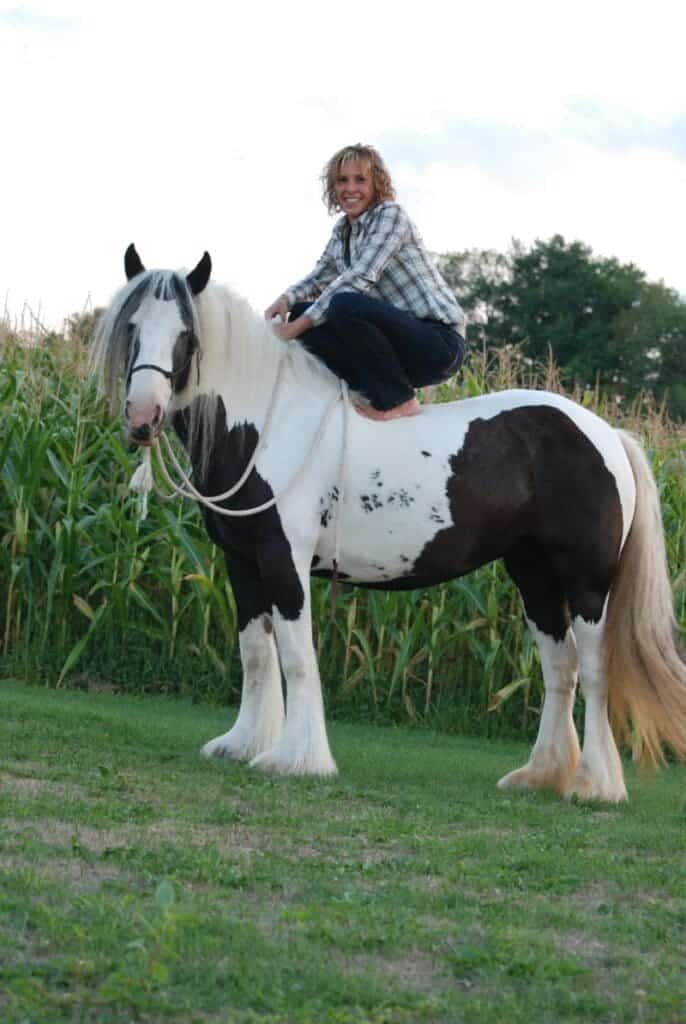
Gypsy Horse
Now, you must be thinking about what a gypsy horse is. Gypsy Vanner horses, sometimes referred to as Irish Cobs or Gypsy Cobs, are becoming more and more prized for their striking looks and kind dispositions. These horses, initially in Great Britain and Ireland to pull caravans, are today seen as adaptable riding partners for riders of all skill levels, including beginners and kids. Their coats are available in various hues, such as black, palomino, blue roan, and silver dapple.
They have characteristic, luscious manes and tails. In addition to their sturdy, muscular physique, Gypsy Vanners are known for their peaceful, kind disposition. Regular maintenance is necessary to keep their gorgeous coat and feathering in good shape. Gypsy Vanners is a famous horse breed in Europe and North America and an excellent option for anyone looking for a trustworthy and attractive horse breed. Let’s get into the history of these gypsy horses.
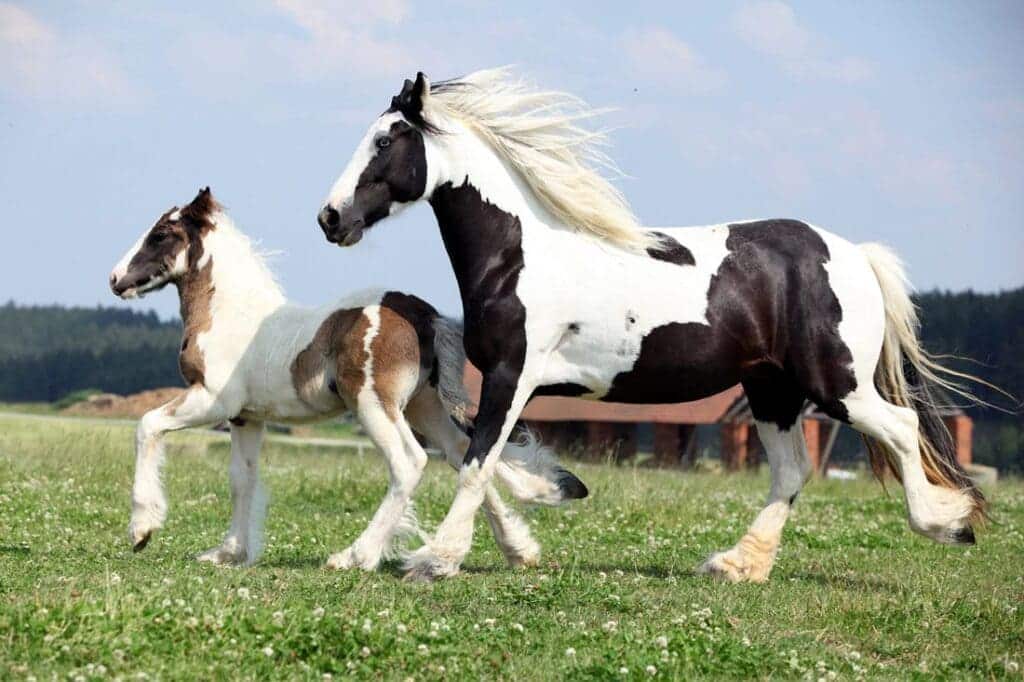
Gypsy Vanner Horse Breed: A History
Originally breeded by the Romani people of Great Britain, the Gypsy Vanner horse was created to pull caravans by fusing the agility and gentle nature of Dales and Fell ponies with the sturdy strength and substantial size of Shire and Clydesdale horses. In addition to its remarkable coat patterns, which include palomino, silver dapple, conventional piebald, and skewbald colors, this breed is also well-known for its abundant mane and tail. This breed acquired popularity and recognition swiftly when it was officially introduced to the United States in 1996, the same year the Gypsy Vanner Horse Society was founded. A beloved breed among amateur and professional horse enthusiasts worldwide, the Gypsy Vanner is prized for its gentle disposition, intelligence, and ease of training. It is also highly sought after for its exceptional performance in traditional caravan pulling, riding, and equestrian sports.
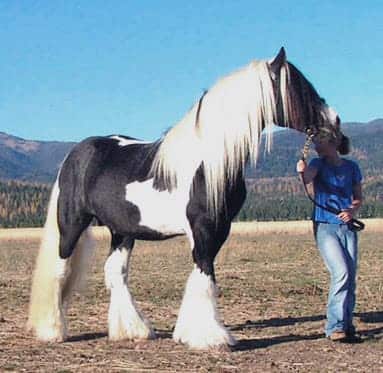
Gypsy Horse Size & Height
A unique breed of horse recognized for its robust bulk and small stature is the Gypsy Vanner. When measured against larger draft breeds, they are generally on the smaller side, standing between 12.2 and 16 hands high. Gypsy Vanners are surprisingly broad and solid for their comparatively small height, making them very competent to handle complex jobs. Because of their muscular bodies, these horses are great for quickly pulling carriages and caravans.
Gypsy Vanners are not only skilled weight pullers but also wonderful riding horses. Their sturdy and long-lasting construction makes them a flexible option for horseback sports, enabling them to handle bigger riders easily. Gypsy Vanners are dependable and practical, with the perfect balance of size, strength, and agility, whether riding in a harness or under saddle.
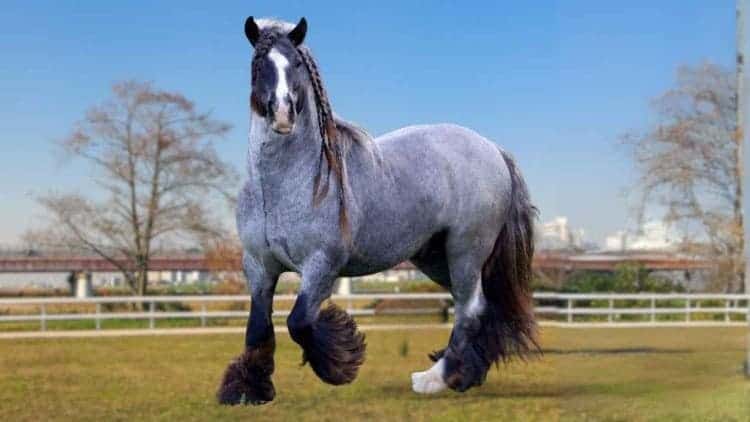
Breeding of Gypsy Horse
Gypsy banners are carefully bred to emphasize three unique attributes: strength, adaptability, and calm disposition. These horses, first developed to pull caravans, are now excellent in various equestrian sports, including carriage driving and show events. They are also well-liked in Western and English riding styles, fitting well with everything from trail riding to dressage. Their mild disposition makes them perfect for family use and therapeutic riding programs, and their sturdy construction supports heavier riders. To maintain the breed’s reputation and enhance its performance in various sports, breeders value characteristics that guarantee robust health and a pleasant disposition. Through careful breeding, Gypsy Vanners are of a high quality, which preserves their usefulness and popularity in the equestrian community. The work preserves the breed’s heritage, which is an acceptance by equestrian fans around the world.

Gypsy Vanner Horse: Colors
Gypsy Vanner horses are prized for their diverse coat colors and patterns and are well-known for their remarkable appearances. Even though the Romani people raised them to pull caravans, they originated in Great Britain and Ireland. They are popular worldwide, particularly in North America and the United States. Several breed registries, such as the Gypsy Vanner Horse Society, highlight the breed’s wide range of colors, which includes:
Typical Color Schemes
·Tobiano
This pattern consists mainly of dark coats with white patches.
·Skewbald
Identifiable by white patches on any color base coat save black.
·Blagdon
Easily identified by a white splotch on the abdomen contrasted with a darker color.

Other Colors for the Coat
Black, Blue, Roan, Silver Dapple, Palomino
Gypsy vanners are not categorized solely based on color, despite their ability to blend colors well. They are helpful as workhorses, show horses, and riding horses since they have been selectively bred for physical characteristics and color patterns.
With their thick manes, tails, and sturdy frames, this breed of horses never fails to enthrall equestrian aficionados and would-be owners. They represent a harmonious union of grace, power, and practicality. In the horse world, Gypsy Vanners are highly respected, regardless of whether they are mounted for pleasure or employed to haul goods.

Characteristics of Gypsy Horse
Unique Appearance
The robust and powerful build of the Gypsy Horse sometimes referred to as the Gypsy Vanner, Gypsy Cob, gypsy caballo, or Gypsy Pony, makes it easily identifiable. Their height usually ranges from 13.2 to 15.2 hands, and they have a robust, muscular body. Gypsy Vanners, well-known for appearing straight out of a fairy tale, have thick, flowing manes and tails that begin at the knees or hocks. This characteristic gives their entire look a dramatic flair.

Differences in Color
The Gypsy Horse breed has diverse color variants, encompassing piebald, skewbald, and solid colors such as black, white, and the vivid blue roan. They stand out thanks to distinctive color patterns, including blue roan, silver dapple, and palomino. Especially in the run-up to exhibitions, their thick, frequently wavy coats must be in full groom to preserve their attractiveness and avoid matting.
Versatility and Temperament
Gypsy Horses are great family horses that suit novice and expert riders due to their calm and kind disposition. Because of their serene disposition, they are ideal for various equestrian sports, including dressage and driving. Gypsy Vanners are a beautiful blend of practicality and elegance, and their adaptability and work ethic make them ideal for both competitive and leisure pursuits.

Health Problems
Scratches
Gypsy horses with crusty scabs on their legs are prone to swelling and lameness and need special attention.
Mallenders and Sallenders
Gypsy Vanner horses are more susceptible to infections due to thick, crust growths on their legs, which are there by excessive keratin production.
Chronic Progressive Lymphedema
Gypsy horses with chronic progressive lymphedema suffer from thicker skin, lymph accumulation, and ongoing swelling.
Myopathy of Polysaccharide Storage
This causes muscles to store too much glycogen, which can cause discomfort, tremors, and lameness. It is seen in several Gypsy horse bloodlines.

Final Thoughts
By now, you must have learned a lot about the great gypsy horse type. The Gypsy Horse, often called the Gypsy Vanner, is a symbol of beauty and adaptability, found everywhere, from the verdant countryside of Great Britain to the vast stretches of North America. This breed is great for its rich mane and range of colors, including palomino gypsy vanner, silver dapple gypsy horse, and blue roan; initially cultivated by nomads to pull gypsy caravans. The Gypsy Vanner Horse Society maintains stringent breed standards that guarantee this type of horse is not only beautiful to look at but also strong and kind, which makes the horse great for pull and riding. Moreover, you can find horses for sale as well.
In conclusion, whether flaunting the solid elegance of a black Gypsy Vanner or the speckled coat of a silver dapple, every horse exudes a distinct appeal and usefulness that guarantees its status as a cherished show horse and a cherished family companion across countries.



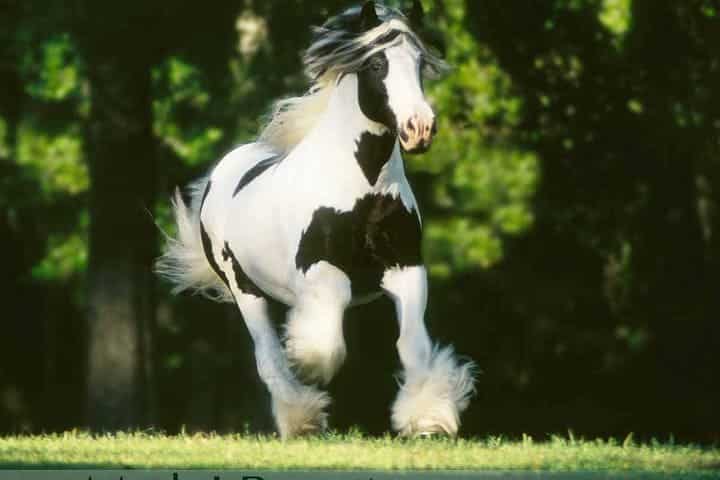
1 comment
[…] explore the long distance they travel? Look no further; we are here to guide you. Whether it’s the gypsy horse breed or any other horse breed, we will explore nothing but speed here. Let’s jump over those hurdles […]